Josiane Zerubia, INRIA, France
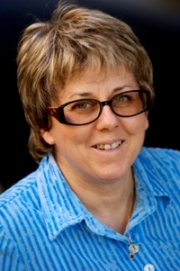 Abstract: In this talk, we combine the methods from probability theory and stochastic geometry to put forward new solutions to the multiple object detection and tracking problem in high resolution remotely sensed image sequences. First, we present a spatial marked point process model to detect a pre-defined class of objects based on their visual and geometric characteristics. Then, we extend this model to the temporal domain and create a framework based on spatio-temporal marked point process models to jointly detect and track multiple objects in image sequences. We propose the use of simple parametric shapes to describe the appearance of these objects. We build new, dedicated energy based models consisting of several terms that take into account both the image evidence and physical constraints such as object dynamics, track persistence and mutual exclusion. We construct a suitable optimization scheme that allows us to find strong local minima of the proposed highly non-convex energy. As the simulation of such models comes with a high computational cost, we turn our attention to the recent filter implementations for multiple objects tracking, which are known to be less computationally expensive. We propose a hybrid sampler by combining the Kalman filter with the standard Reversible Jump MCMC. High performance computing techniques are also used to increase the computational efficiency of our method. We provide an analysis of the proposed framework. This analysis yields a very good detection and tracking performance at the price of an increased complexity of the models. Tests have been conducted both on high resolution satellite and microscopy image sequences.
Abstract: In this talk, we combine the methods from probability theory and stochastic geometry to put forward new solutions to the multiple object detection and tracking problem in high resolution remotely sensed image sequences. First, we present a spatial marked point process model to detect a pre-defined class of objects based on their visual and geometric characteristics. Then, we extend this model to the temporal domain and create a framework based on spatio-temporal marked point process models to jointly detect and track multiple objects in image sequences. We propose the use of simple parametric shapes to describe the appearance of these objects. We build new, dedicated energy based models consisting of several terms that take into account both the image evidence and physical constraints such as object dynamics, track persistence and mutual exclusion. We construct a suitable optimization scheme that allows us to find strong local minima of the proposed highly non-convex energy. As the simulation of such models comes with a high computational cost, we turn our attention to the recent filter implementations for multiple objects tracking, which are known to be less computationally expensive. We propose a hybrid sampler by combining the Kalman filter with the standard Reversible Jump MCMC. High performance computing techniques are also used to increase the computational efficiency of our method. We provide an analysis of the proposed framework. This analysis yields a very good detection and tracking performance at the price of an increased complexity of the models. Tests have been conducted both on high resolution satellite and microscopy image sequences.
Biography: Josiane Zerubia has been a permanent research scientist at INRIA since 1989 and director of research since July 1995. She was head of the PASTIS remote sensing laboratory (INRIA Sophia-Antipolis) from mid-1995 to 1997 and of the Ariana research group (INRIA/CNRS/University of Nice), which worked on inverse problems in remote sensing and biological imaging, from 1998 to 2011. Since January 2012, she has been head of Ayin research group (INRIA-SAM) dedicated to models of spatio-temporal structure for high resolution image processing with a focus on remote sensing and skincare imaging. She has been professor at SUPAERO (ISAE) in Toulouse since 1999. Before that, she was with the Signal and Image Processing Institute of the University of Southern California (USC) in Los-Angeles as a postdoc. She also worked as a researcher for the LASSY (University of Nice/CNRS) from 1984 to 1988 and in the Research Laboratory of Hewlett Packard in France and in Palo-Alto (CA) from 1982 to 1984. She received the MSc degree from the Department of Electrical Engineering at ENSIEG, Grenoble, France in 1981, the Doctor of Engineering degree, her PhD and her ‘Habilitation’, in 1986, 1988, and 1994 respectively, all from the University of Nice Sophia-Antipolis, France. She is a Fellow of the IEEE (2003- ) and IEEE SP Society Distinguished Lecturer (2016-2017). She was a member of the IEEE IMDSP TC (SP Society) from 1997 till 2003, of the IEEE BISP TC (SP Society) from 2004 till 2012 and of the IVMSP TC (SP Society) from 2008 till 2013. She was associate editor of IEEE Trans. on IP from 1998 to 2002, area editor of IEEE Trans. on IP from 2003 to 2006, guest co-editor of a special issue of IEEE Trans. on PAMI in 2003, member of the editorial board of IJCV from 2004 till March 2013 and member-at-large of the Board of Governors of the IEEE SP Society from 2002 to 2004. She has also been a member of the editorial board of the French Society for Photogrammetry and Remote Sensing (SFPT) since 1998, of the Foundation and Trends in Signal Processing since 2007 and member-at-large of the Board of Governors of the SFPT since September 2014. She has been associate editor of the on-line resource « Earthzine » (IEEE CEO and GEOSS) since 2006. She was co-chair of two workshops on Energy Minimization Methods in Computer Vision and Pattern Recognition (EMMCVPR’01, Sophia Antipolis, France, and EMMCVPR’03, Lisbon, Portugal), co-chair of a workshop on Image Processing and Related Mathematical Fields (IPRM’02, Moscow, Russia), technical program chair of a workshop on Photogrammetry and Remote Sensing for Urban Areas (Marne La Vallée, France, 2003), co-chair of the special sessions at IEEE ICASSP 2006 (Toulouse, France) and IEEE ISBI 2008 (Paris, France), publicity chair of IEEE ICIP 2011 (Brussels, Belgium), tutorial co-chair of IEEE ICIP 2014 (Paris, France), general co-chair of the workshop Earthvision at IEEE CVPR 2015 (Boston, USA) and a member of the organizing committee and plenary talk co-chair of IEEE-EURASIP EUSIPCO 2015 (Nice, France). She also organized and chaired an international workshop on Stochastic Geometry and Big Data at Sophia Antipolis, France, in November 2015. She is part of the organizing committees of both GRETSI 2017 symposium (Juan les Pins, France) and ISPRS 2020 congress (Nice, France).
Her main research interest is in image processing using probabilistic models. She also works on parameter estimation, statistical learning and optimization techniques.
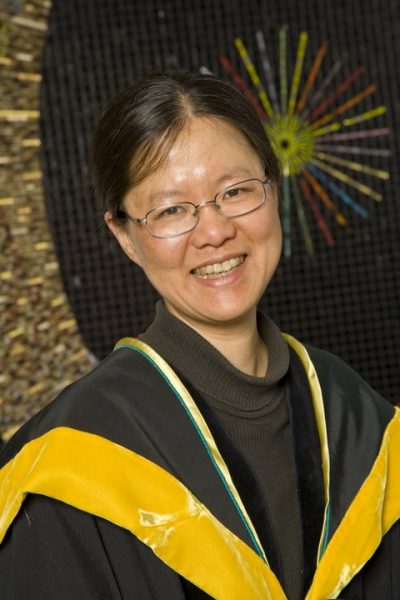 I will present a theory that primary visual cortex creates a saliency map to guide attention exogenously, and show how this explains and predicts experimental data in physiology and in visual behavior. Implications of this theory will be discussed.
I will present a theory that primary visual cortex creates a saliency map to guide attention exogenously, and show how this explains and predicts experimental data in physiology and in visual behavior. Implications of this theory will be discussed.
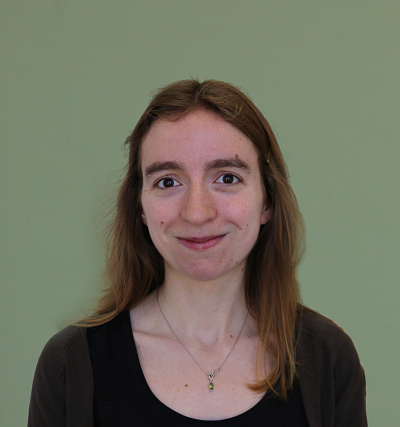 Abstract: `Motion dazzle’ is the hypothesis that certain types of patterns, such as high contrast stripes and zigzags, can cause misperceptions in the speed and direction perception of moving targets. Motion dazzle is relevant to both ecological questions, including why striped patterning may have evolved in animals such as zebras, and also for camouflage design for human purposes. My work addresses the question of whether motion dazzle exists, and what mechanisms may underlie it if it does. I use an interdisciplinary approach, combining techniques from psychophysics and behavioural ecology in testing human subjects. I present data showing that targets with striped markings are among the hardest for humans to ‘capture’ in a touch screen task, but that these effects may depend upon factors such as target orientation and whether multiple targets are present. I also present psychophysical data that shows that subjects make small direction judgement errors that depend upon the orientation of the striped pattern on a target relative to the direction of motion, suggesting a possible mechanism for motion dazzle effects. Finally, I discuss future directions for my research, including a new project involving large scale data collection using citizen science methods.
Abstract: `Motion dazzle’ is the hypothesis that certain types of patterns, such as high contrast stripes and zigzags, can cause misperceptions in the speed and direction perception of moving targets. Motion dazzle is relevant to both ecological questions, including why striped patterning may have evolved in animals such as zebras, and also for camouflage design for human purposes. My work addresses the question of whether motion dazzle exists, and what mechanisms may underlie it if it does. I use an interdisciplinary approach, combining techniques from psychophysics and behavioural ecology in testing human subjects. I present data showing that targets with striped markings are among the hardest for humans to ‘capture’ in a touch screen task, but that these effects may depend upon factors such as target orientation and whether multiple targets are present. I also present psychophysical data that shows that subjects make small direction judgement errors that depend upon the orientation of the striped pattern on a target relative to the direction of motion, suggesting a possible mechanism for motion dazzle effects. Finally, I discuss future directions for my research, including a new project involving large scale data collection using citizen science methods.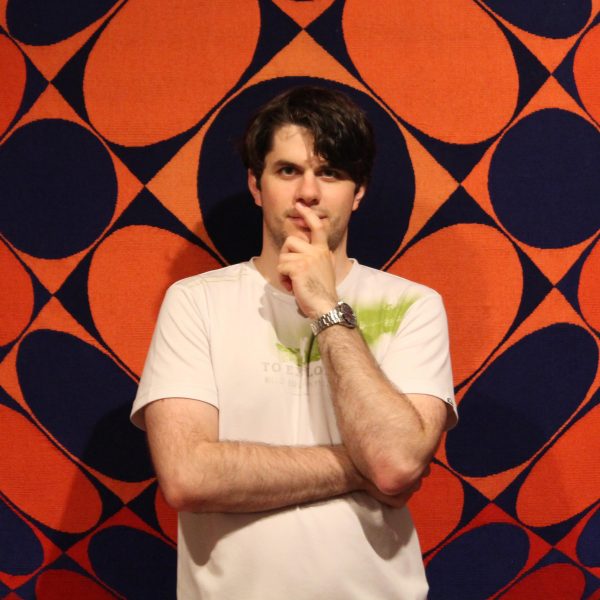 Abstract: Why do armies operating in the same environment (e.g. temperate woodland) wear markedly different dress? The primary function of military camouflage is generally understood to be concealment, however the vast diversity of camouflage patterns (over 600 patterns in the past century) suggests additional design factors. One hypothesis is that camouflage patterns can also act as signals of alliance and aiding soldiers to distinguish friend from foe. On the other hand, newly independent states can endorse their identity by issuing distinctive camouflage. In both cases designs must remain constrained to function as adequate concealment. The aim of this talk is to demonstrate how a phylogenetic model can be useful for testing these hypotheses. In order to quantify similarity between patterns, I used methods from computer vision to compare their texture and colour. Camouflage of countries can be represented as phylogenies as temporal information (e.g. when patterns were issued) is readily available. Combining computer vision-derived metrics and phylogenetic analysis, I show how certain “design drifts” can be detected throughout the history of camouflage uniforms.
Abstract: Why do armies operating in the same environment (e.g. temperate woodland) wear markedly different dress? The primary function of military camouflage is generally understood to be concealment, however the vast diversity of camouflage patterns (over 600 patterns in the past century) suggests additional design factors. One hypothesis is that camouflage patterns can also act as signals of alliance and aiding soldiers to distinguish friend from foe. On the other hand, newly independent states can endorse their identity by issuing distinctive camouflage. In both cases designs must remain constrained to function as adequate concealment. The aim of this talk is to demonstrate how a phylogenetic model can be useful for testing these hypotheses. In order to quantify similarity between patterns, I used methods from computer vision to compare their texture and colour. Camouflage of countries can be represented as phylogenies as temporal information (e.g. when patterns were issued) is readily available. Combining computer vision-derived metrics and phylogenetic analysis, I show how certain “design drifts” can be detected throughout the history of camouflage uniforms.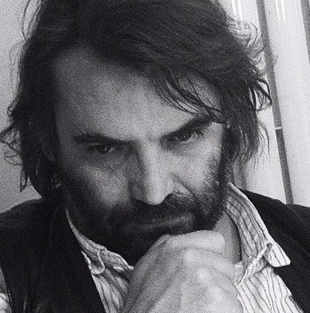 Everyone knows what cosmologists do: they gaze out into the sky to see the secrets of what’s out there, matching observations with theory to understand how the universe came about. Visual psychophysicists are motivated by a similar sense of wonder; but the universe they want to understand lives inside the biological computer of the human brain. By using carefully designed visual stimuli in controlled laboratory environments, it turns out that this non-invasive research method can provide an incisive view of the visual mechanisms that lie within us, whether we are conscious of them or not! I shall show how psychophysics has been used to see into the very early stages of the visual processing stream, where the ‘atoms’ of vision are very different from the rich visual experience that they deliver when we open our eyes, and where competing theories have been pitched against one another, helping us to understand how we see.
Everyone knows what cosmologists do: they gaze out into the sky to see the secrets of what’s out there, matching observations with theory to understand how the universe came about. Visual psychophysicists are motivated by a similar sense of wonder; but the universe they want to understand lives inside the biological computer of the human brain. By using carefully designed visual stimuli in controlled laboratory environments, it turns out that this non-invasive research method can provide an incisive view of the visual mechanisms that lie within us, whether we are conscious of them or not! I shall show how psychophysics has been used to see into the very early stages of the visual processing stream, where the ‘atoms’ of vision are very different from the rich visual experience that they deliver when we open our eyes, and where competing theories have been pitched against one another, helping us to understand how we see.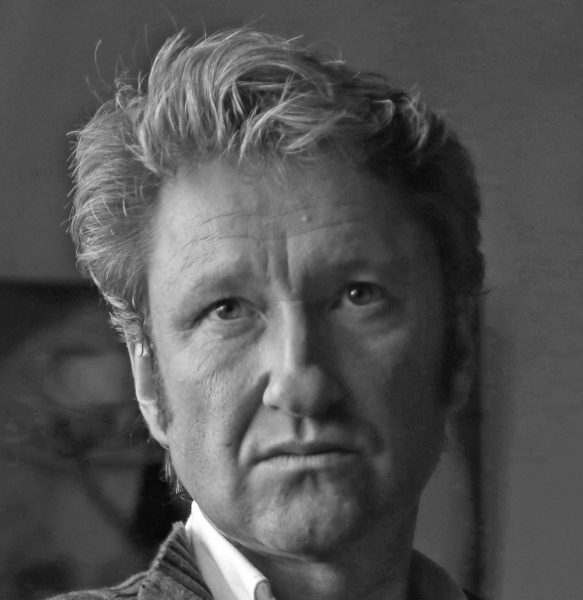 Abstract: What is the best way to represent the three-dimensional world we see on a two-dimensional surface? For several hundred years there was basically one answer to this question: use linear perspective. Linear perspective is a method of mapping rays of light onto an image plane in a way that corresponds to well-understood laws of geometry and optics. It now underpins nearly all existing imaging technology. But even the artists who first developed linear perspective understood that it had severe limitations when it comes to representing the wide angled, binocular vision most humans enjoy. As has been pointed out many times, linear perspectival images viewed under everyday conditions do not replicate our visual experience of the world very well. Over the last two centuries various alternative methods have been proposed, normally by artists, which are claimed to better represent human visual perception. These are usually based on subjective judgments about how things appear to human observers rather the objective behaviour of light. Such methods, while interesting historically, were of limited utility to image-makers as they were even more complicated to apply than the rules of linear perspective. However, the current state of computer graphics allows us to manipulate image data in powerful ways, and to design systems that incorporate some of the subjective properties of vision that it was not previously practical to model. In this talk I will outline the approach my lab is taking to designing new technologies for representing human vision that are an improvement on what can currently be achieved with existing linear perspective-based technology. This will include some discussion of the art historical background to our work, the scientific data we have gathered, and demonstrations of some the technological solutions we have developed.
Abstract: What is the best way to represent the three-dimensional world we see on a two-dimensional surface? For several hundred years there was basically one answer to this question: use linear perspective. Linear perspective is a method of mapping rays of light onto an image plane in a way that corresponds to well-understood laws of geometry and optics. It now underpins nearly all existing imaging technology. But even the artists who first developed linear perspective understood that it had severe limitations when it comes to representing the wide angled, binocular vision most humans enjoy. As has been pointed out many times, linear perspectival images viewed under everyday conditions do not replicate our visual experience of the world very well. Over the last two centuries various alternative methods have been proposed, normally by artists, which are claimed to better represent human visual perception. These are usually based on subjective judgments about how things appear to human observers rather the objective behaviour of light. Such methods, while interesting historically, were of limited utility to image-makers as they were even more complicated to apply than the rules of linear perspective. However, the current state of computer graphics allows us to manipulate image data in powerful ways, and to design systems that incorporate some of the subjective properties of vision that it was not previously practical to model. In this talk I will outline the approach my lab is taking to designing new technologies for representing human vision that are an improvement on what can currently be achieved with existing linear perspective-based technology. This will include some discussion of the art historical background to our work, the scientific data we have gathered, and demonstrations of some the technological solutions we have developed. Abstract: In this talk, we combine the methods from probability theory and stochastic geometry to put forward new solutions to the multiple object detection and tracking problem in high resolution remotely sensed image sequences. First, we present a spatial marked point process model to detect a pre-defined class of objects based on their visual and geometric characteristics. Then, we extend this model to the temporal domain and create a framework based on spatio-temporal marked point process models to jointly detect and track multiple objects in image sequences. We propose the use of simple parametric shapes to describe the appearance of these objects. We build new, dedicated energy based models consisting of several terms that take into account both the image evidence and physical constraints such as object dynamics, track persistence and mutual exclusion. We construct a suitable optimization scheme that allows us to find strong local minima of the proposed highly non-convex energy. As the simulation of such models comes with a high computational cost, we turn our attention to the recent filter implementations for multiple objects tracking, which are known to be less computationally expensive. We propose a hybrid sampler by combining the Kalman filter with the standard Reversible Jump MCMC. High performance computing techniques are also used to increase the computational efficiency of our method. We provide an analysis of the proposed framework. This analysis yields a very good detection and tracking performance at the price of an increased complexity of the models. Tests have been conducted both on high resolution satellite and microscopy image sequences.
Abstract: In this talk, we combine the methods from probability theory and stochastic geometry to put forward new solutions to the multiple object detection and tracking problem in high resolution remotely sensed image sequences. First, we present a spatial marked point process model to detect a pre-defined class of objects based on their visual and geometric characteristics. Then, we extend this model to the temporal domain and create a framework based on spatio-temporal marked point process models to jointly detect and track multiple objects in image sequences. We propose the use of simple parametric shapes to describe the appearance of these objects. We build new, dedicated energy based models consisting of several terms that take into account both the image evidence and physical constraints such as object dynamics, track persistence and mutual exclusion. We construct a suitable optimization scheme that allows us to find strong local minima of the proposed highly non-convex energy. As the simulation of such models comes with a high computational cost, we turn our attention to the recent filter implementations for multiple objects tracking, which are known to be less computationally expensive. We propose a hybrid sampler by combining the Kalman filter with the standard Reversible Jump MCMC. High performance computing techniques are also used to increase the computational efficiency of our method. We provide an analysis of the proposed framework. This analysis yields a very good detection and tracking performance at the price of an increased complexity of the models. Tests have been conducted both on high resolution satellite and microscopy image sequences.